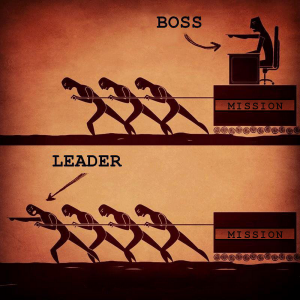
 Defining the Relationship Between Management & Leadership
Defining the Relationship Between Management & Leadership
In the following paragraphs, I will discuss the relationship between management and leadership. I will define the two ideas in isolation, show two different scenarios within an organization that depicts the difference between the two ideas, and discuss the similarities and differences of management and leadership. As I set out to define the relationship between management and leadership, you will see that there is an overlap in the characteristics that define the two; however, there are clear elements that distinguish a leader from a manager.
Defining Management & Leadership
On a surface level, distinguishing between management and leadership can be challenging as many of the characteristics are similar (Laureate, 2015). Northouse (2016), for example, list several traits that are associated with a leader; they include some of the following: drive for task completion, persistence in pursuit of goals, and willingness to tolerate frustration. These attributes are visible within leadership as Northouse suggest, but they are also attributes that would be found in management. Consider the following definitions of management and leadership:
Management: Solomon et al. (2016) defines management as the “ability to motivate the group in order to achieve the desired results”. It’s about the ability to get the job completed with the resources at your disposal.
Leadership: Northouse defines leadership as “a process whereby an individual influences a group of individuals to achieve a common goal.” The focus with leadership is the ability to influence and alter an organization’s path.
These definitions aid in our ability to distinguish between the two; while there are similarities between management and leadership, there are clear differences.
Roger & Linda’s Scenarios
Roger’s Scenario: Roger coordinates is a software development team that operates with meticulous detail; his team’s output is rarely questioned due to the high-quality standards that they have become known for. Rogers’s team seems to be happy and productive.
Linda’s Scenario: Similar to Roger, Linda manages a team of software developers at the same company. She focuses her efforts on what her team will be asked to develop in the future, specifically focused on mobile technology. She has been working closely with the executive team attempting to educate them on where the industry trends are moving.
Solomon et al. argue that managers are good leaders but not always the inverse; he discusses the theme that separates leaders from managers is the concept of vision. In the case of Roget and Linda, we clearly see which of the two standouts as visionary. Linda has vision and foresight to look toward the future needs of her development team; Roger, on the other hand, is content to complete the work he is given. It’s important to note that we need both the “Roger-type” manager as well as the “Linda-type” manager in our organizations. Both strong managers and strong leaders are necessary components for an organization’s success (Kotter, 2001).
Similarities & Differences
As we’ve seen from the definitions and examples of Roger and Linda above, there are similarities between management and leadership; in addition to the similarities, there are several distinct differences as well. Young & Dulewicz (2008) conducted a study that examined the roles of managers and leaders within the British Royal Navy. Within the study, their research was able to clearly define the similarities and differences between management and leadership. In the paragraphs to follow, I’ll discuss those differences and similarities.
The similarities that exist between these two were relatively easy to identify. Northouse defined the similarities as a drive for task completion, persistence in pursuit of goals, and willingness to tolerate frustration. In Young & Dulewicz’s research, they define the similarities as conceptualizing what needs to be done, aligning people and resources, taking an active role, and creating success. These are characteristics that we would find in both a leader and a manager.
What distinguishes a leader from a manager is the visionary approach coupled with the ability to influence others. The key aspects we see associated with leadership are setting direction, aligning and motivating people, and mastery of the content (Young & Dulewicz). In addition to those characteristics, Northouse suggests that leaders distinguish themselves from managers by absorbing interpersonal stress, accepting consequences of decisions, and their ability to manage the social situation. These differences, while subtle, are the elements that separate a leader from a manager.
Conclusion
There are similar qualities that exist in both managers and leaders. These qualities are important as an organization needs both a strong management layer as well as a strong leadership layer to achieve success. While we see similarities, there are key differences that elevate leaders from managers; mainly their ability to motivate people while focusing on the over-arching vision of the organization.
References
Kotter, J. P. (2001). What leaders really do. Harvard Business Review, 79(11), 85–96.
Laureate Education (Producer). (2015). Leadership and management [Video file]. Baltimore, MD: Author.
Northouse, P. G. (2016). Leadership: Theory and practice (7th ed.). Thousand Oaks, CA: Sage.
Solomon, I. G., Costea, C., & Inta, A. M. (2016). Leadership versus management in public organizations. Economics, Management & Financial Markets, 11(1), 143-151. Retrieved from https://www.addletonacademicpublishers.com/
Young, M. & Dulewicz, V. (2008). Similarities and differences between leadership and management: High-performance competencies in the British Royal Navy. British Journal of Management, 19 (1), 17-32. doi: 10.1111/j.1467-8551.2007.00534.x
